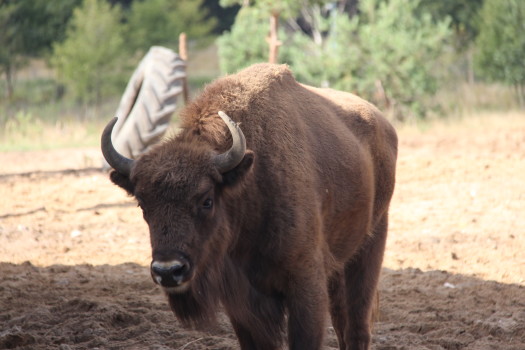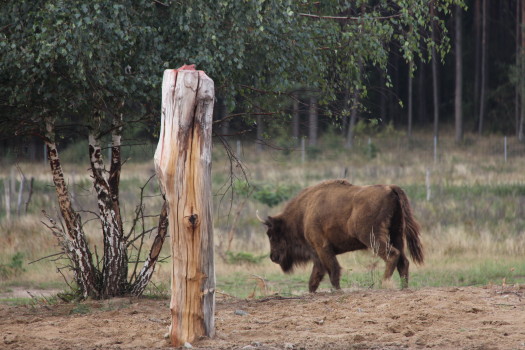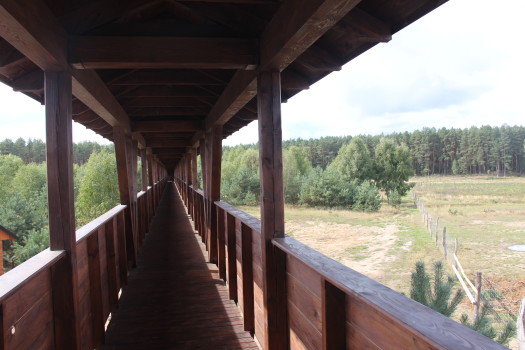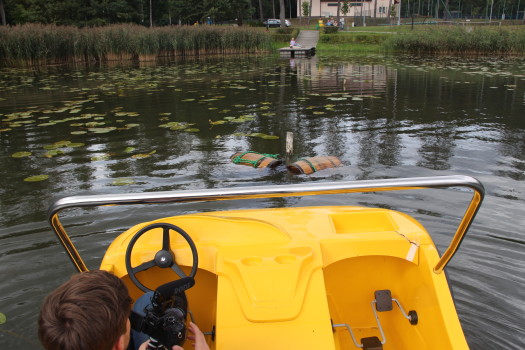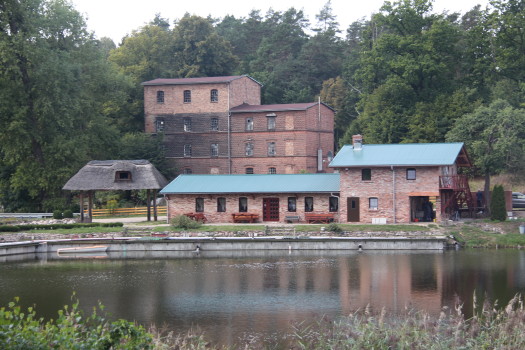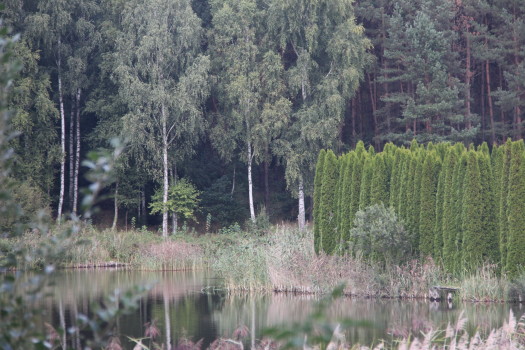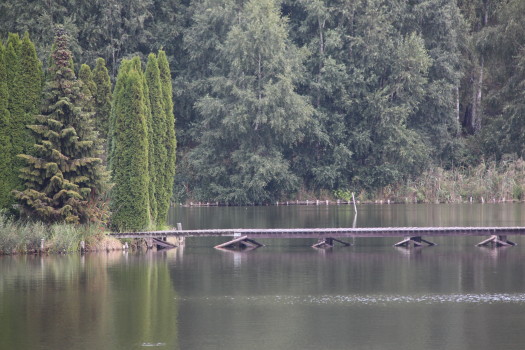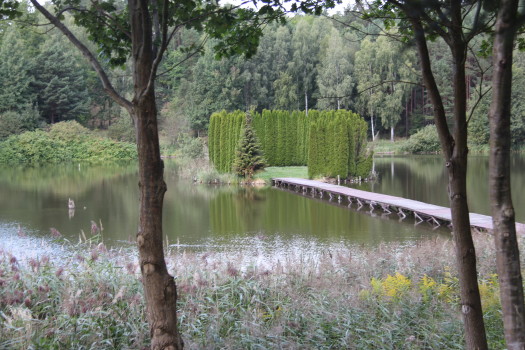Week 1 – Day 3 // Dzika Zagroda and Kalisz Pomorski

Although leaving the vibrant imaginarium that is Republika Wyobraźni was sure to make our lives that little bit more vapid, it was nothing that the abundance of West Pomeranian natural beauty couldn’t quickly fix.
After a hearty continental breakfast, we hit the road, heading in a North-Easterly direction to Dzika Zagroda – a multipurpose centre for the iconic European bison, set on a total of 21 hectares of land with a stunning forested backdrop. An NGO, opened to the public just last year, the centre is home to 6 of the majestic animals in total: five females and one rather boisterous bull.
With the aim of increasing the bison population throughout Western Pomerania in a sustainable manner, the centre also monitors and cares
for two wild herds of bison which are located in the nearby forested land, comprising almost 200 animals in total. Moreover, due to the occasional propensity of the intrepid bison-watcher to catch a glimpse of the creature in the wild, Dzika Zagroda also aims to act as a kind of public relations centre for the species. It was my first encounter with a bison – I didn’t expect them to be so big!
Marcin and I nearly lost fingers when feeding the animals carrots!
We were astounded to learn that all existing European bison derive from just 12 animals. At one point in recent history, the bison became extinct in the wild; of approximately 60 bison kept in captivity, just 12 were fit for breeding. This underpins the importance of the various projects which operate from Dzika Zagroda. The centre also cares for the increasing wolf population in Western Pomerania, and, soon, it will also be home to a pack of lynxes.
We stayed watching the bison for some time, explored the plush new facilities, which included a raised viewing platform, and excitedly quizzed the knowledgeable bison keepers on the centre’s fascinating inhabitants, before departing to continue the Az Po Morze adventure.
The name of the town punched into the sat-nav was Kalisz Pomorski; the subject of interest was…pickled cucumbers!
Upon our arrival in the quaint, picturesque town of kalisz Pomorski, Marcin and I were greeted by a large, green statue, personifying (you guessed it!) a gherkin. We were bemused, yet curious: just how much can be discovered from pickled vegetables?
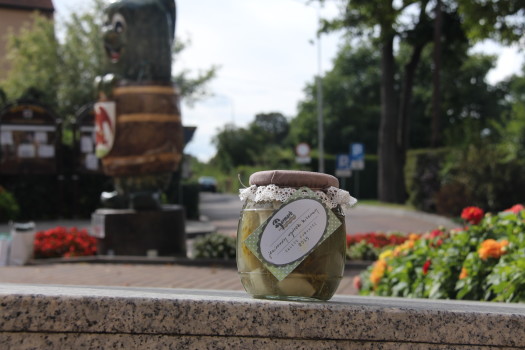 Well, aside from the fact that the pickled cucumbers were fed to soldiers after WW2, not too much, it turns out; but that doesn’t stop the town celebrating on a grand scale every July: television crews arrive and famous Polish bands perform in Kalisz Pomorski each year when the pickled cucumbers – which are packed into a barrel with dill, garlic, water and salt – are hauled from a secret location at the bottom of a lake where they’re left to mature. Admittedly, my experience with this kind of cuisine – which was limited to sifting the gherkins from a Big Mac – was enough to prepare me not to like it. Surprisingly enough, it tasted good! This enforced my initial impression: traditional Polish food, although differing a fair amount from British dishes, is delicious! Kalisz Pomorski has undoubtedly perfected their brand of vegetable; it’s deservedly been awarded a mark of certification from the Polish Ministry for Agriculture.
Well, aside from the fact that the pickled cucumbers were fed to soldiers after WW2, not too much, it turns out; but that doesn’t stop the town celebrating on a grand scale every July: television crews arrive and famous Polish bands perform in Kalisz Pomorski each year when the pickled cucumbers – which are packed into a barrel with dill, garlic, water and salt – are hauled from a secret location at the bottom of a lake where they’re left to mature. Admittedly, my experience with this kind of cuisine – which was limited to sifting the gherkins from a Big Mac – was enough to prepare me not to like it. Surprisingly enough, it tasted good! This enforced my initial impression: traditional Polish food, although differing a fair amount from British dishes, is delicious! Kalisz Pomorski has undoubtedly perfected their brand of vegetable; it’s deservedly been awarded a mark of certification from the Polish Ministry for Agriculture.
Although the celebrations surrounding this tasty delicacy may encapsulate Kalisz Pomorski’s sense of identity, with a nod to the historical origin of the food, the festival is primarily just good fun! This, according to Tomasz Bukowski – the town’s cultural chief – is what attracts the 5,000-strong crowd of revelers who descends on Kalisz Pomorski each year to consume the entire batch of pickled cucumbers in just 15 minutes!

Eager to experience the momentous unveiling of the pickled cucumber barrels, Marcin and I were kindly treated by the town to a simulation of the event. We mustered all our peddling might to reach the barrels in the middle of the lake. After hauling them back to land, a quick change of clothes was in order to get in
the spirit!
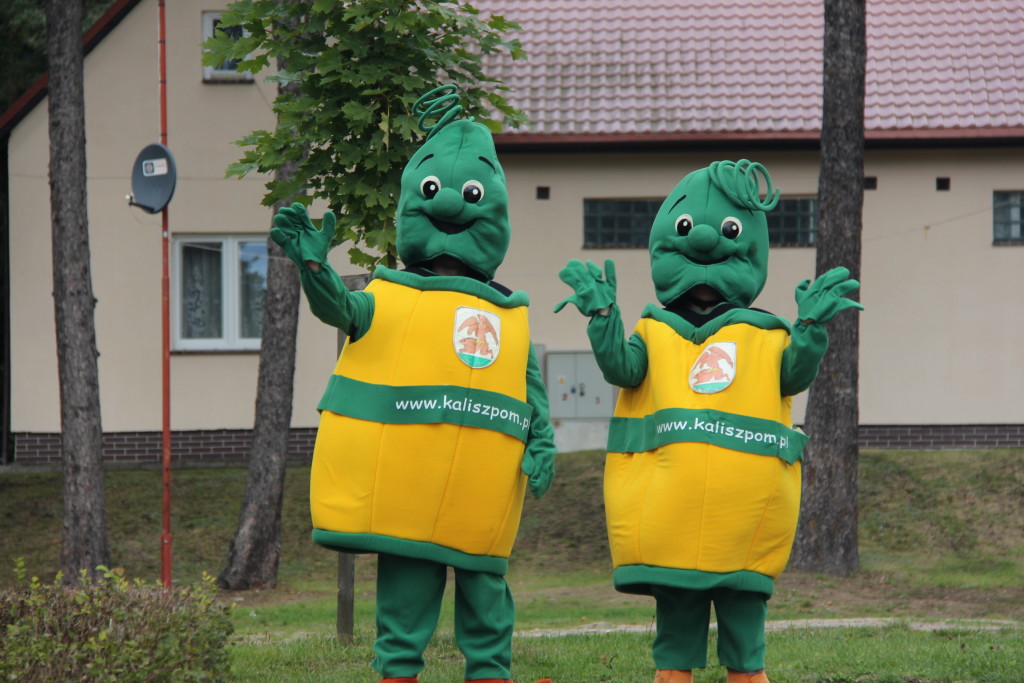
Perhaps the future will see the town fulfill its aim of becoming the pickled cucumber capital of Europe?
With the taste of garlic and dill lingering on our lips, lunch was certainly on the agenda. We were taken to Agroturystyka ?U Ewy? – a trout farm – for food. Pulling up to a beautiful lake, which was enclosed by a dense, tall forest, we practically jumped out of the car with excitement to explore. Pools of water, which teamed with trout, were separated from the lake by a concrete walkway, along which strolled an elderly gent who fed the fish. The whole scene resembled a romantic oil painting: the bright blue sky was mirrored by the water, the trout bustled on the surface of the pools, and the stunning restaurant looked over the whole view. What else for lunch but trout, of course!
We saw a different side to West Pomerania today: we were shown the extent of the natural beauty on offer in the region. The island, which sat in the middle of the lake, with trees all around its perimeter, will stay in my memory for a long, long time.
Marcin’s video from today:

